Statement I: In the meter bridge experiment shown in figure, the balance length AC corresponding to null deflection of the galvanometer is x. If the radius of the wire AB is doubled, the balanced length becomes 4x.
Statement II: The resistance of a wire is inversely proportional to the square of its radius.
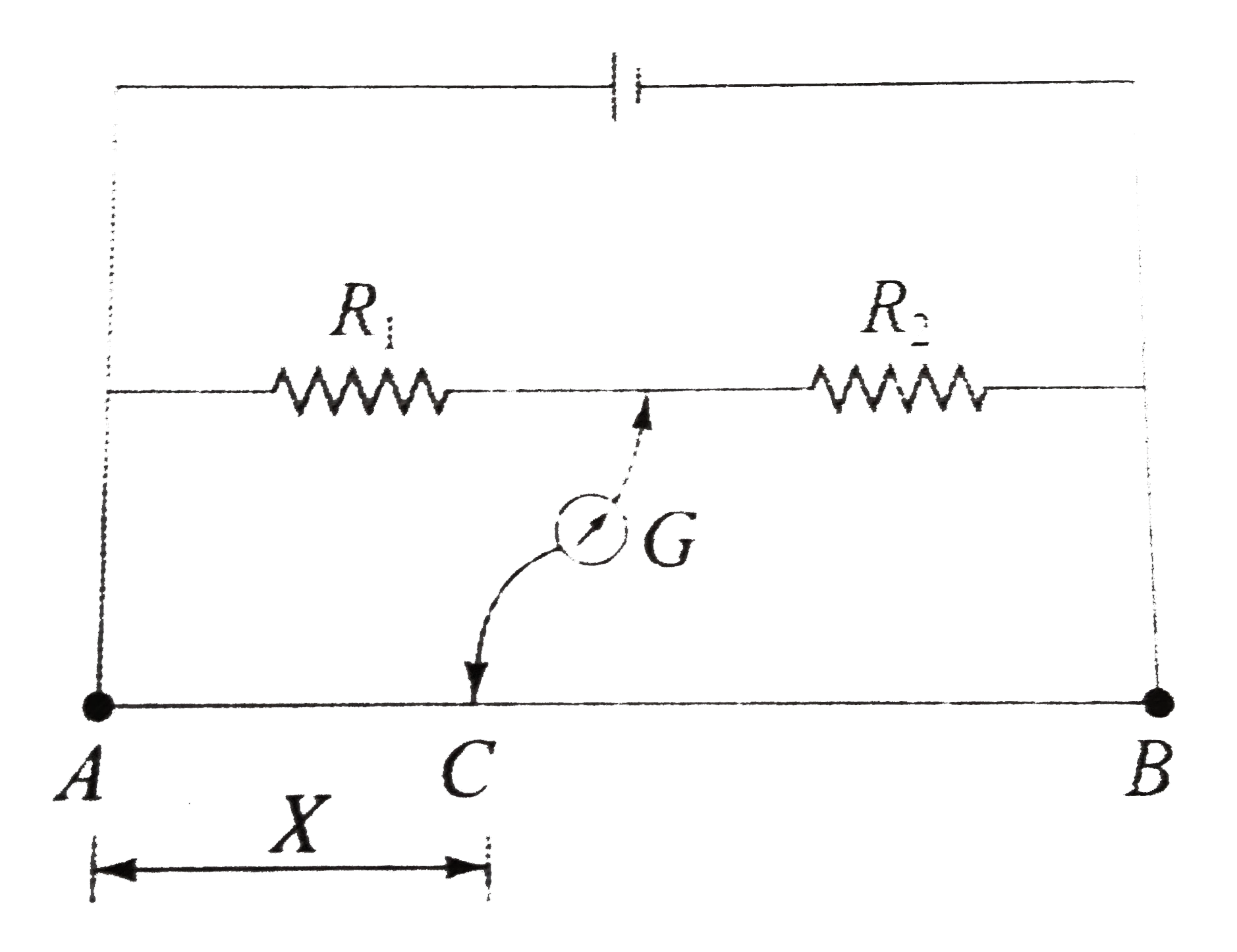
Statement I is true, Statement II is True, Statement II is a correct explanation for Statement I.
Statement I is True, Statement II is True, Statement II is not a correct explanation for Statement I.
Statement I is True, Statement II is False.
Statement I is False, Statement II is True.
The correct Answer is:D
d. The condition for no deflection of the galvanometer is
R1R2=RACRCB
where RACandRCB are the resistances of the bridge wire of
length AC and CB, respectively. If the radius of the wire AB is
doubled, the ratio RAC/RCB will remain unchanged. Hence, the
balanced length will remain the same.
Topper's Solved these Questions
- MISCELLANEOUS VOLUME 3BOOK - CENGAGE PHYSICSCHAPTER - MISCELLANEOUS VOLUME 3EXERCISE - Integer Answer Type
11 Videos
- MISCELLANEOUS VOLUME 3BOOK - CENGAGE PHYSICSCHAPTER - MISCELLANEOUS VOLUME 3EXERCISE - True and False
3 Videos
- MISCELLANEOUS VOLUME 3BOOK - CENGAGE PHYSICSCHAPTER - MISCELLANEOUS VOLUME 3EXERCISE - Assertion-Reasoning Type
1 Videos
- MECHANICAL PROPERTIES OF SOLIDSBOOK - CENGAGE PHYSICSCHAPTER - MECHANICAL PROPERTIES OF SOLIDSEXERCISE - Question Bank
4 Videos
- MISCELLANEOUS VOLUME 5BOOK - CENGAGE PHYSICSCHAPTER - MISCELLANEOUS VOLUME 5EXERCISE - Integer
12 Videos
Similar Questions
In the meter bridge circuit shown in figure-3.281 find the length AC at null deflection in galvanometer.
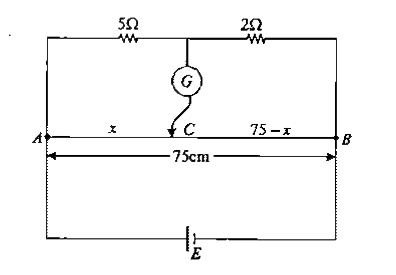
View SolutionIn the shown arrangement of the experiment of the meter bridge if AC corroesponding to null deflection of galvanometer is x, what would be its value if the radius of the wire AB is doubled?
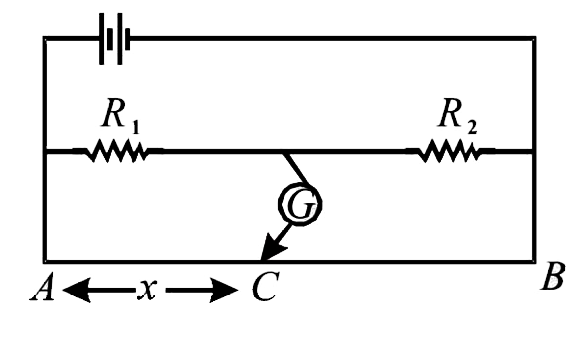 .
.
View Solution
Knowledge Check
In the shows arrangement of a meter bridge, if AC corresponding to null deflection of galvanometer is x, what would be its value if the radius of the wire AB is doubled?
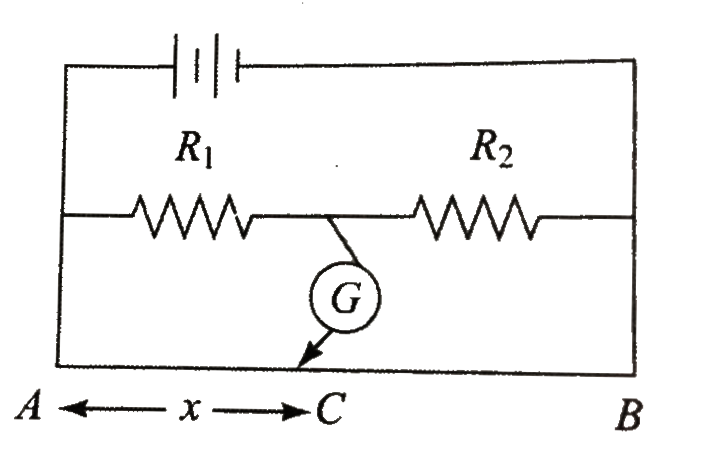 AxBx/4C4xD2x
AxBx/4C4xD2xIn the shown arrangement of the experiment of the meter bridge if AC corroesponding to null deflection of galvanometer is x, what would be its value if the radius of the wire AB is doubled?
 .AxBx4C4xD2x
.AxBx4C4xD2xThe potentiometer wire AB shown in figure is 50cm long.When AD=30cm, no deflection occurs in the galvanmeter.Find R.
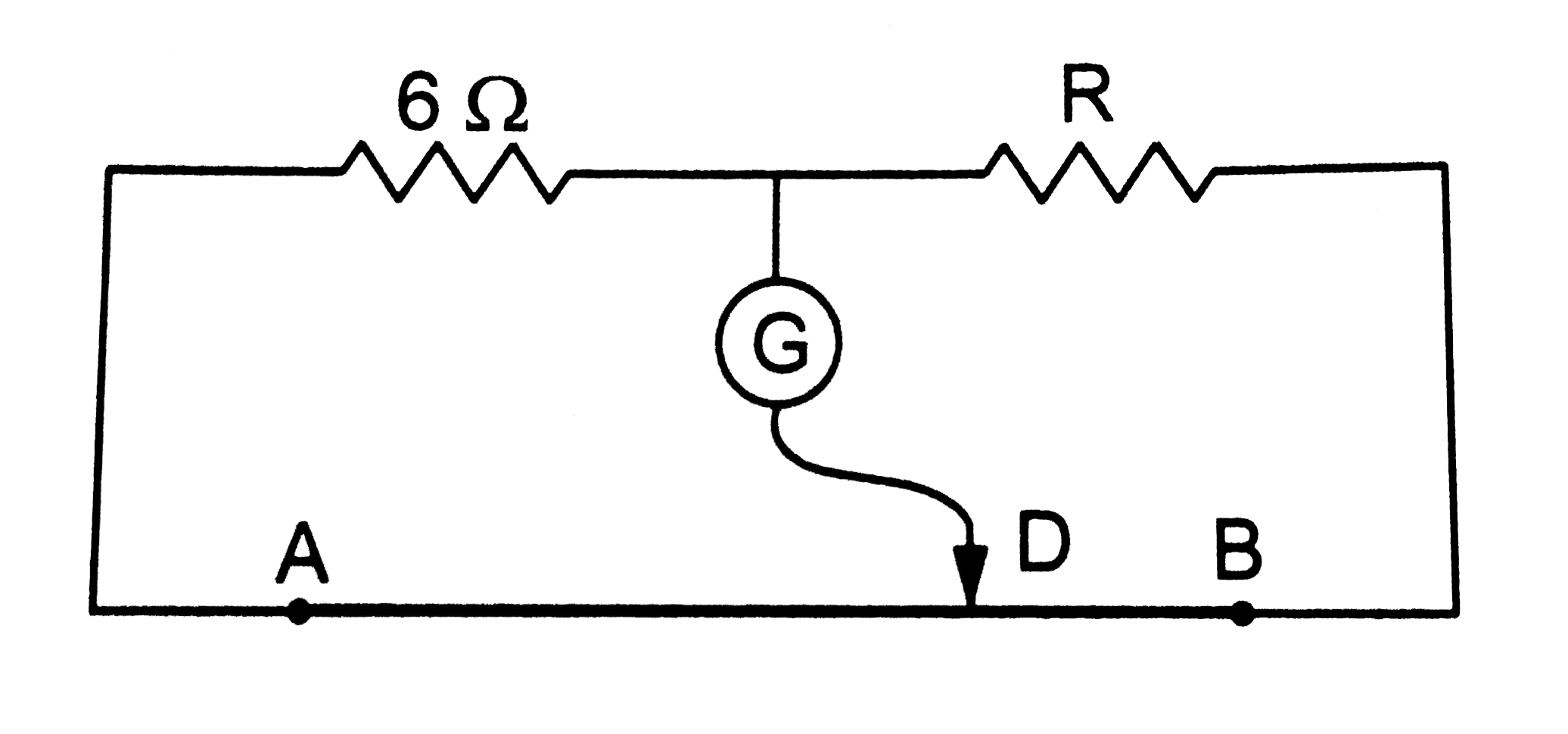 A1ΩB2ΩC3ΩD4Ω
A1ΩB2ΩC3ΩD4Ω
In the meter bridge circuit shown in figure . Find the length AB for null deflection in galvaometer .
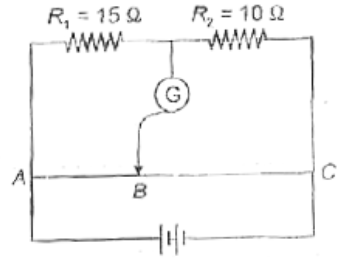
View SolutionIn an experiment on metre bridge the balancing length on wire is 'l'. What would be its value, if the radius of the metre bridge wire is doubled ? Justify your answer.
View SolutionIf in a meter bridge experiment, the balancing length l was 25 cm for the situation shown in the figure. If the length and diameter of the of wire of resistance R is made half, then find the new balancing length in centimeter is
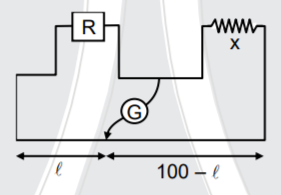
View SolutionIn a metre bridge experiment lx and lr are the balancing lengths and R is known resistance then unkown, resistance is given by
View SolutionAssertion (A): The balancing point of a meter bridge is obtained at L = 40 cm. When the area of cross-section of the wire of is doubled, the balancing point shifts to L = 60 cm.
Reason (R ): Resistance of wire is directly proportional to its area of cross-section.
View Solution
